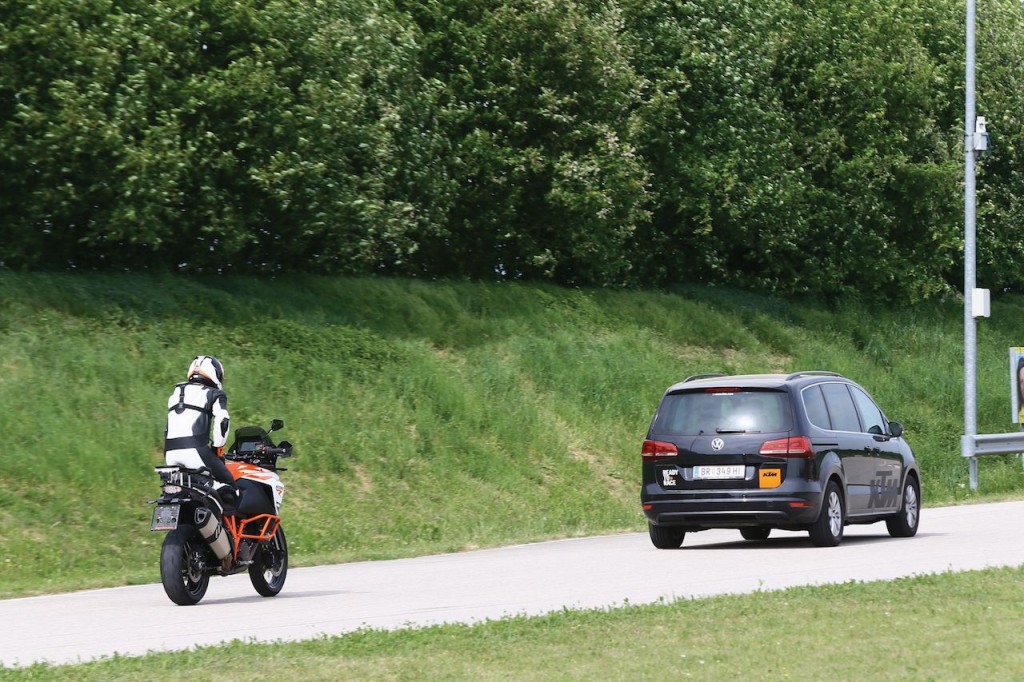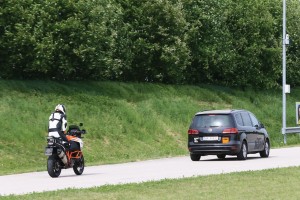Bosch studies motorcycles that can hear and see
The German company is developing a package with three products: Adaptive cruise control, Forward collision warning and Blind spot detection


Bosch – Cars can be made safer with measures such as crumple zones, airbags and seat belts. For motorcyclists, however, the dangers they face on the road are much greater: the risk of losing their life in an accident is up to 20 times higher than that of motorists.
It is a fact that, last year, the number of fatal motorcycle accidents in Germany alone increased by 9% (source: German Federal Statistics Office). The vision of Bosch is very clear: eliminate fatal accidents for motorcyclists in road traffic. With this aim, the company has developed a new safety package for motorcycles, which includes theAdaptive Cruise Control, Forward collision warning and Blind-spot detection. The package is based on the same technologies that enable autonomous driving in cars. Motorcycle manufacturers Ducati e KTM will include the new rider assistance systems in the models in production as early as 2020. For Bosch, this is the next step towards accident-free driving, an evolution that will not reduce the pleasure of riding and will not limit the responsibility of motorcyclists. “Bosch takes motorcycle safety to a whole new level“, said Dirk Hoheisel, member of the Board of Management of Bosch.
Studies show that motorcycle accidents have two main causes: loss of control by the rider and collision with other vehicles (source: Bosch accident research). In the future, thanks to the help of Bosch technology, these dangerous situations in traffic will no longer occur. An additional reason to equip vehicles with smarter safety technology comes from the fact that nine out of ten accidents are due to human error. Bosch, the world's leading supplier of motorcycle safety technologies, has already made riding on two wheels much safer thanks to assistance systems such as ABS and MSC (Motorcycle Stability Control). The company today takes a further step forward. According to estimates from Bosch accident research, radar-based assistance systems could prevent one in seven motorcycle accidents. These electronic assistants are constantly vigilant and, in the event of an emergency, react more quickly than humans can. The technology on which they are based combines radar sensors, braking system, engine management and HMI. By equipping motorcycles with radar as a sense organ, it is possible to apply the new safety and assistance functions for motorcycles and have an accurate perception of the space around the vehicle. As a result, not only does safety increase, but the driving experience and comfort also improve. “The motorcycle of the future must be able to see and hear“, said Geoff Liersch, head of Bosch's Two-Wheeler and Powersports business unit.
There are three new technologies that Bosch intends to bring to the world of motorcycles. The first is theACC – Adaptive Cruise Control which regulates the speed of the vehicle according to the flow of traffic and maintains the necessary safety distance. In this way, rear-end collisions caused by an insufficient safety distance can be effectively prevented. ACC not only offers convenient assistance, but also allows motorcyclists to concentrate more on the road, especially in heavy traffic. Then there's the Forward collision warning, a collision warning system for motorcycles to reduce the risk of rear-end collisions or mitigate their consequences. The system is activated when the vehicle is started and supports the driver in all relevant speed ranges. If it detects that another vehicle is dangerously close and the driver does not react to the situation, it warns with an audible or visual signal. Finally the Blind spot detection, a radar sensor acts as the electronic eye of the blind spot recognition system and detects objects in hard-to-see places. Whenever a vehicle enters the driver's blind spot, the technology warns him via a visual signal, for example via the rear-view mirror.
if you want to always be updated on our news
Follow us here


















